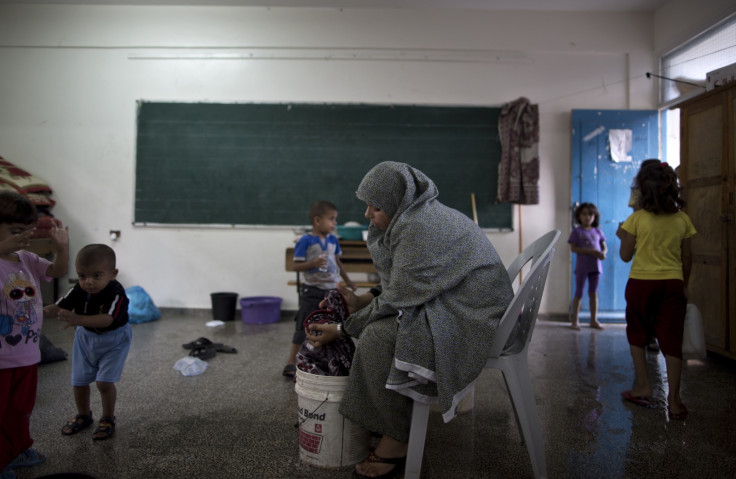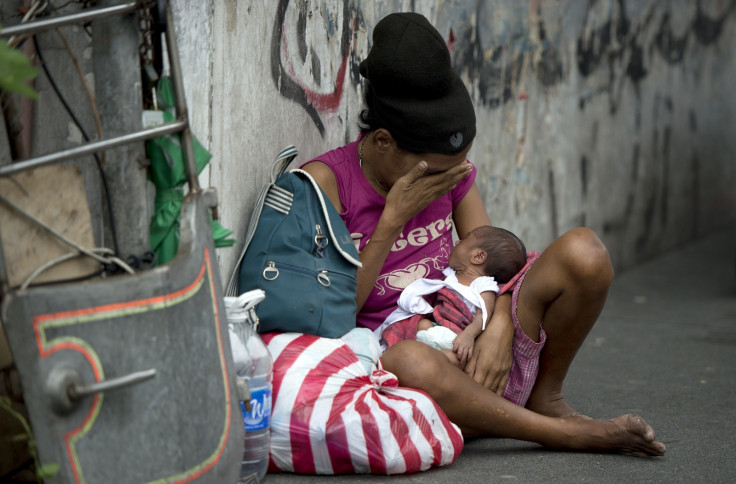International Day for the Eradication of Poverty: Why Girls' Education is Key to Ending Destitution

The International Day for the Eradication of Poverty has been observed every year since 1993, when it was designated by the United Nations General Assembly to promote awareness of the need to eliminate destitution in all countries. In 2014, the theme is clear: "Leave no one behind: think decide and act together against extreme poverty".
Educating girls and women is one of the largest moral challenges of our generation and it is essential to eradicating poverty. Today, around 250 million girls live below the poverty line worldwide and over 60 million girls are out of school. And until girls are given access to good quality education, child and maternal mortality, disease and child marriage – all by-products of poverty – will continue to rise.
Economic benefits of girls' education
The cost of excluding girls is irrefutably high. In Uganda, 85% of girls leave school early, resulting in $10bn lost in potential earnings. According to Harry Patrinos, lead education economist at the World Bank, the "profitability of education, according to estimates of private rate of return, is indisputable, universal and global".
Research carried out by the World Bank has shown that women can expect a 1.2% higher return than men on the resources they invest in education, and providing one extra year of education to girls increases their wages by between 10% to 20%. This increase is 5% more than the corresponding returns on providing a boy with an extra year in school.
There are numerous statistics that support this research. In Uganda, 85% of girls leave school early, resulting in $10bn in lost potential earnings.
Gemma Parkin, a spokesperson for Save the Children, told IBTimes UK: "The powerful effects of education carry from one generation to the next. Educated girls have fewer, healthier and better educated children, and just one year of secondary education for a girl can mean a 25% increase in wages later in life."
"Children are, as we speak, living amid war, suffering attacks on their schools and being refused education," she said, adding that currently, 50 million children affected by armed conflict are being denied the opportunity to go to school.
In Syria, at least 3,465 schools have been destroyed or damaged, with many occupied for military purposes. From an almost 100% enrolment rate, the country has descended to the second worst rate of school attendance in the world, with 2.8 million children out of school.

Education, health and poverty
Poverty and poor health are problems all linked to education. Deprivation of food, clean water, sanitation and shelter, as well as lack of education, unemployment and low income, all combine to reduce opportunities, undermine hope and limit choices. According to the World Health Organisation, the health gap between the impoverished and other populations will only be closed if the lives of women are improved.
"Investing in women's health has a direct impact on decreasing poverty and achieving wider social and economic goals," said Elizabeth Lule, the former World Bank population and reproductive heath advisor in the Human Development Network.
By keeping women and girls healthy and productive, parents have smaller families and therefore devote more time and financial resources to each child. This invests in the formation of human and social capital, contributing to economic growth and equity.
Education is closely associated to the age at which women marry and have children, which in turn, is related to economics. For example, by delaying child marriage and early birth for one million girls, Bangladesh could potentially add $69bn (£39m) to the national income over these girls' lifetimes.
According to Girls Not Brides, an estimated 15 million girls aged under 18 are married worldwide with no say in the matter. In the developing world, one in seven girls is married before her 15<sup>th birthday. Some child brides are as young as eight. The consequences of child marriage are far-reaching, there is greater risk of death from pregnancy and child birth complications, higher HIV/AIDS infections and higher domestic violence. With little access to education and economic opportunities, they are more likely to live in poverty.
In sub-Saharan Africa and south and west Asia, child marriage affects one in eight girls. One in seven gives birth by the age of 17. According to UNESCO's 2013 Education for All Global Monitoring Report, if all girls received a secondary education, 64% fewer girls would be locked into marriage at an age when they should still be in school.
"On this day we recommit to think, decide and act together against extreme poverty – and plan for a world where no one is left behind. Our aim must be prosperity for all, not just a few," UN secretary-general Ban Ki-moon said in a statement.
The UN has called for those posting messages about the International Day for the Eradication of Poverty on social media to use the hashtag #EndPoverty.
© Copyright IBTimes 2025. All rights reserved.






















